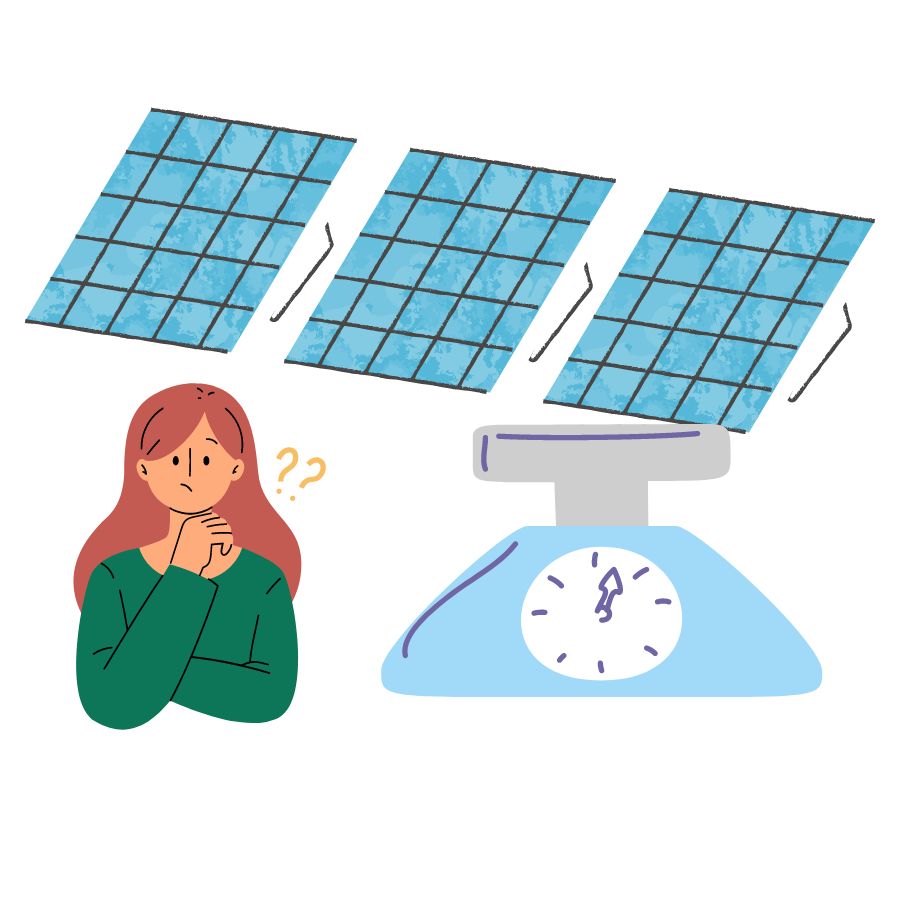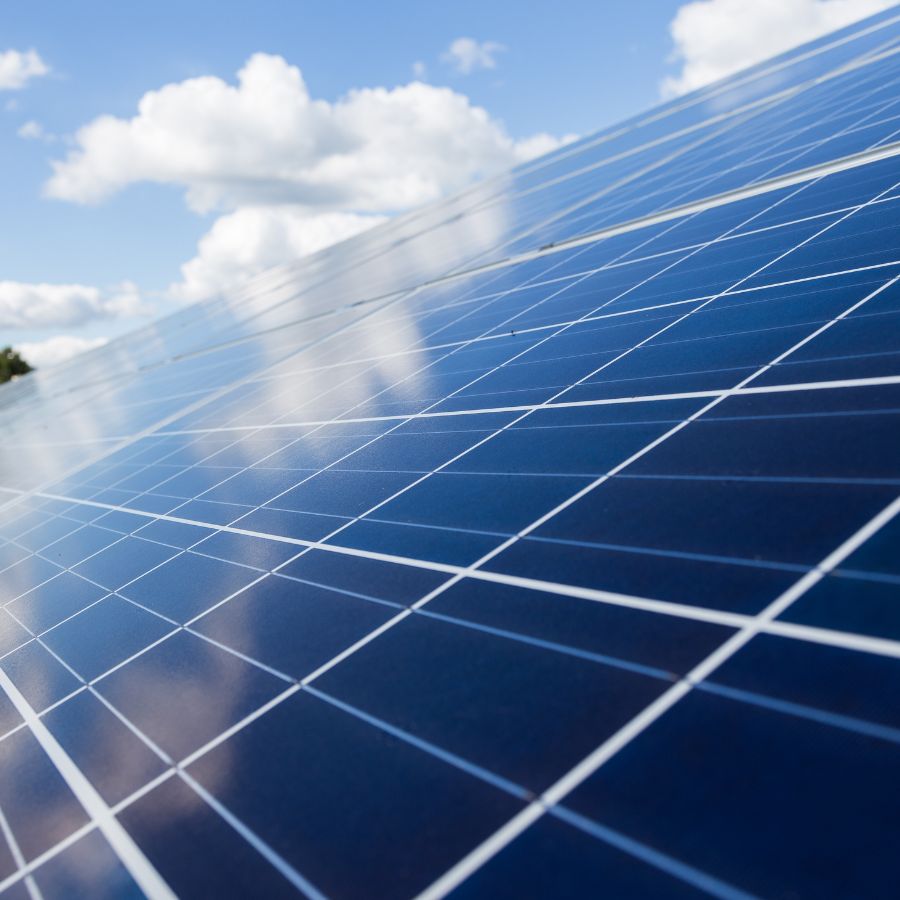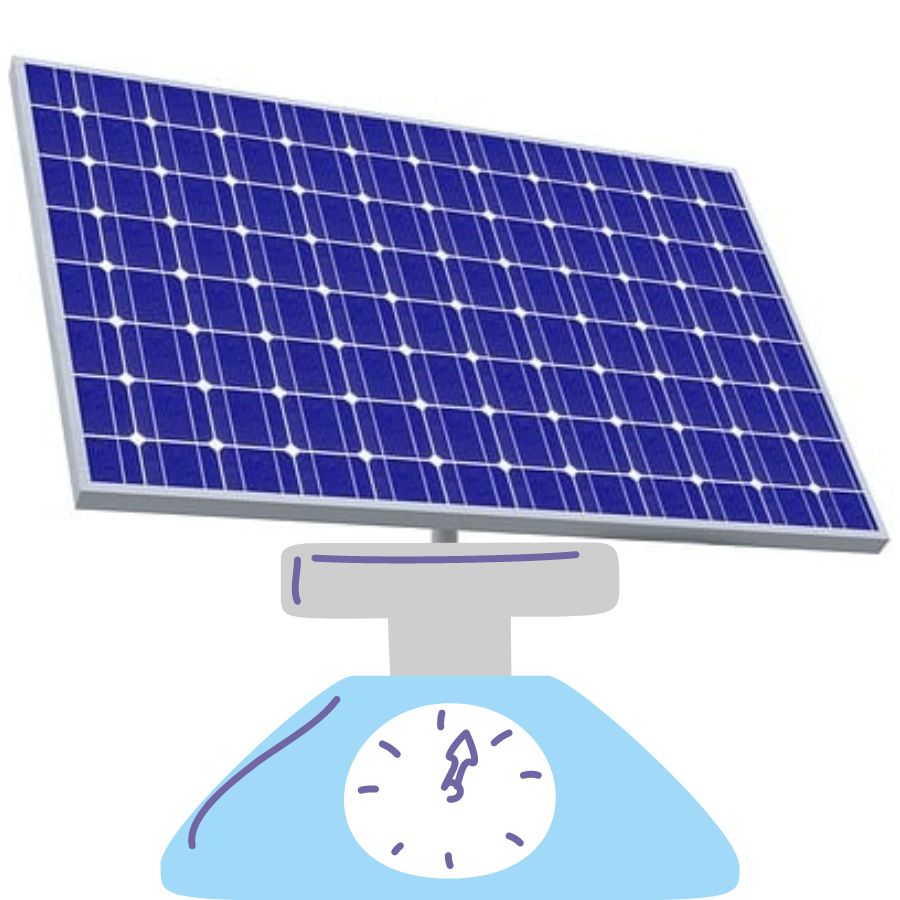Do you know how much solar panels weigh? Solar energy has witnessed a remarkable surge in popularity over the years as individuals and businesses embrace renewable energy sources. With solar panels at the forefront of harnessing solar power, their usage has become increasingly prevalent in both residential and commercial settings across Canada.
As the demand for solar panel installations continues to grow, it is crucial to understand the weight considerations associated with these energy-efficient devices.
When installing solar panels, the weight factor plays a significant role in various aspects, including structural design and installation efficiency.
Understanding the solar panel’s weight is essential for ensuring safe and successful installations.
This article aims to shed light on the weight aspects of solar panels and the factors that influence their overall weight.
Factors Affecting Solar Panel Weight
Several factors contribute to the weight of solar panels, making it imperative to consider each element during the installation process. Once you’ve determined how much solar panels weigh, you can decide how many solar panels you need for your home in Ireland. The following factors significantly influence the overall weight of solar cells panel:
Solar Panel Size and Dimensions
The single solar panel size and dimensions of solar panels directly impact their weight. Larger panels tend to weigh more than smaller ones, as they contain more solar cells and require additional materials to support the increased surface area. It also helps you determine how many solar panels are needed.
Type of Solar Technology
Solar panels come in different technologies, including monocrystalline, polycrystalline, and thin film.
Each technology has varying weights due to variations in the manufacturing process and materials used. Generally, monocrystalline and polycrystalline panels tend to be heavier than thin-film panels.
Frame Material
The choice of frame material, such as aluminum or steel, affects the weight of solar panels. Aluminum frames commonly help in residential solar panels due to their lightweight nature. One can utilize steel frames for commercial installations where added durability is required.
Glass Thickness and Composition
The thickness and composition of the glass in solar panels can impact their weight.
Thicker glass adds to the overall weight but may enhance the panel’s durability and resistance to environmental factors.
Additional Components
Solar panels include additional components, such as a back sheet, junction box, and wiring beside solar cells.
While these components may not significantly contribute to the overall weight of an individual panel, they should be vital when assessing the importance of a complete solar panel system.
Considering these factors and their impact on solar panel weight is crucial for ensuring the safety and efficiency of installations.
In the following sections, we will delve into the average weight of common solar panel types, the impact of solar panel size on weight, and the weight considerations for installation and structural design.
By understanding these aspects, individuals and businesses can make informed decisions regarding harnessing solar power and incorporating solar panels into their properties.
Average Weight of Common Solar Panel Types

When it comes to an understanding the weight of solar panels, it is essential to examine the average weight range of different panel types.
The most commonly used solar panel types include monocrystalline, polycrystalline, and thin-film panels.
Monocrystalline Solar Panels
Monocrystalline solar panels are renowned for their exceptional efficiency and elegant aesthetics. In terms of weight, these panels typically range from 18 to 20 KG per panel.
The weight may vary slightly depending on the specific dimensions and manufacturer.
For residential solar panels, the average weight of a monocrystalline panel falls within the range of 17 to 21 KGs. Commercial solar panels, which are often larger, may weigh closer to the upper end of the field.
Polycrystalline Solar Panels
Polycrystalline solar panels are another popular choice, balancing efficiency and affordability. On average, these panels weigh slightly less than monocrystalline panels.
The weight of polycrystalline solar panels typically ranges from 16 to 21 KGs per panel.
The average weight for residential solar panel installations is 17 to 20 KGs per panel, while commercial installations may have slightly heavier panels.
Thin-Film Solar Panels
Thin-film solar panels are known for their flexibility and versatility. They are generally lighter compared to crystalline silicon panels. Thin-film panels have an average weight range of 5 to 9 KGs per panel.
This lighter weight makes them suitable for specific applications where weight restrictions or curved surfaces may be a factor. However, it’s important to note that thin-film panels typically have lower efficiency than crystalline panels.
Impact of Solar Panel Size on Weight
The size of the solar panel directly affects its weight. Larger commercial solar panels weigh more as they require more materials and solar cells, increasing weight. Conversely, smaller panels have a lower weight due to reduced surface area and fewer solar cells.
To illustrate the impact of solar panel size on weight, let’s consider standard panel sizes such as the 60-cell and 72-cell configurations. These help in both residential and commercial installations.
A 60-cell solar panel typically measures around 39 inches in width and 66 inches in height, with a weight ranging from 18 to 23 KGs. It translates to an average weight of approximately 1 to 1.5 Kilograms per square foot.
On the other hand, a 72-cell solar panel is slightly larger, measuring around 39 inches in width and 77 inches in height. The weight of 72-cell panels falls within the range of 23 to 28 KGs per panel, resulting in an average weight of around 1.5 to 2 pounds per square foot.
These examples demonstrate that as panel size increases, the weight per panel and weight per square foot increase. Therefore, when planning solar installations, it’s essential to consider the weight of the panels concerning the structural capacity and any weight restrictions that may be in place.
Understanding the average weight of different solar panel types and the impact of panel size on weight enables installers and property owners to make informed decisions regarding selecting and installing commercial solar panels.
Further, knowing how much solar panels weigh can play a crucial role when applying for planning permission for solar panels due to construction and safety considerations.
Weight Considerations for Installation and Structural Design

Weight considerations are crucial when installing solar panels and mounting equipment in the planning and structural design stages. One must carefully assess the weight of a solar panel to ensure the installation’s safety, stability, and longevity.
This section highlights the importance of considering solar panel weight in two common installation scenarios: roof-mounted and ground-mounted installations.
Roof-Mounted Installations
Installing the solar panel system on residential or commercial roofs requires careful consideration of the structural capacity of the top and the load it can support.
The weight of a solar panel, combined with other factors such as snow accumulation, wind loads, and mounting equipment, should be accounted for during the planning stage.
First and foremost, it is essential to determine the weight-bearing capacity of the roof. It involves consulting with a structural engineer or a professional solar installer who can assess the roof’s structural integrity.
The solar panel’s weight must be, at most, the load capacity specified by the building codes and guidelines.
Additionally, one should consider the residential solar panel system’s size and layout. Larger residential solar panels weigh more, and the number of panels required for the desired energy output will influence the total weight.
You should carefully plan the weight distribution across the roof to avoid placing excessive loads on specific areas. Adequate roof reinforcement, such as additional support beams or roof trusses, may be necessary to ensure the stability of the installation.
Ground-Mounted Installations
Ground-mounted solar panel installations provide an alternative to roof-mounted systems, especially in cases where the roof is unsuitable or insufficient for solar panel installation.
However, even for ground-mounted installations, the weight of a solar panel remains an important consideration.
When installing the solar panel on the ground, the weight of the panels can impact the foundation and support structures.
Properly designed and engineered foundations must support the solar panel’s weight and withstand environmental factors such as wind and seismic forces.
The solar panel’s weight is particularly relevant for larger-scale commercial installations, where more panels and larger panel sizes are helpful.
You must evaluate the load-bearing capacity of the ground and the chosen foundation system to ensure that it can safely support the weight of the panels.
Bottom Line
In conclusion, understanding the weight of solar panels is crucial for successful installation and structural design. Various factors, including panel size, technology type, frame material, glass thickness, and additional components, influence the weight of solar panels.
The weight of solar panels is also a key factor to consider when learning how to clean solar panels, as it can impact the approach and equipment used for maintenance.
Installers and property owners can make informed decisions based on their specific needs by examining the average weight range of common solar panel types such as monocrystalline, polycrystalline, and thin-film panels.
The impact of panel size on weight is another significant consideration. As the panel size increases, so does the weight per panel and square foot. It emphasizes the importance of evaluating the weight-bearing capacity of roofs and foundations in roof-mounted and ground-mounted installations, respectively. Considering the weight of solar panels during installation planning and structural design ensures the system’s safety, stability, and longevity.


Leave a Reply